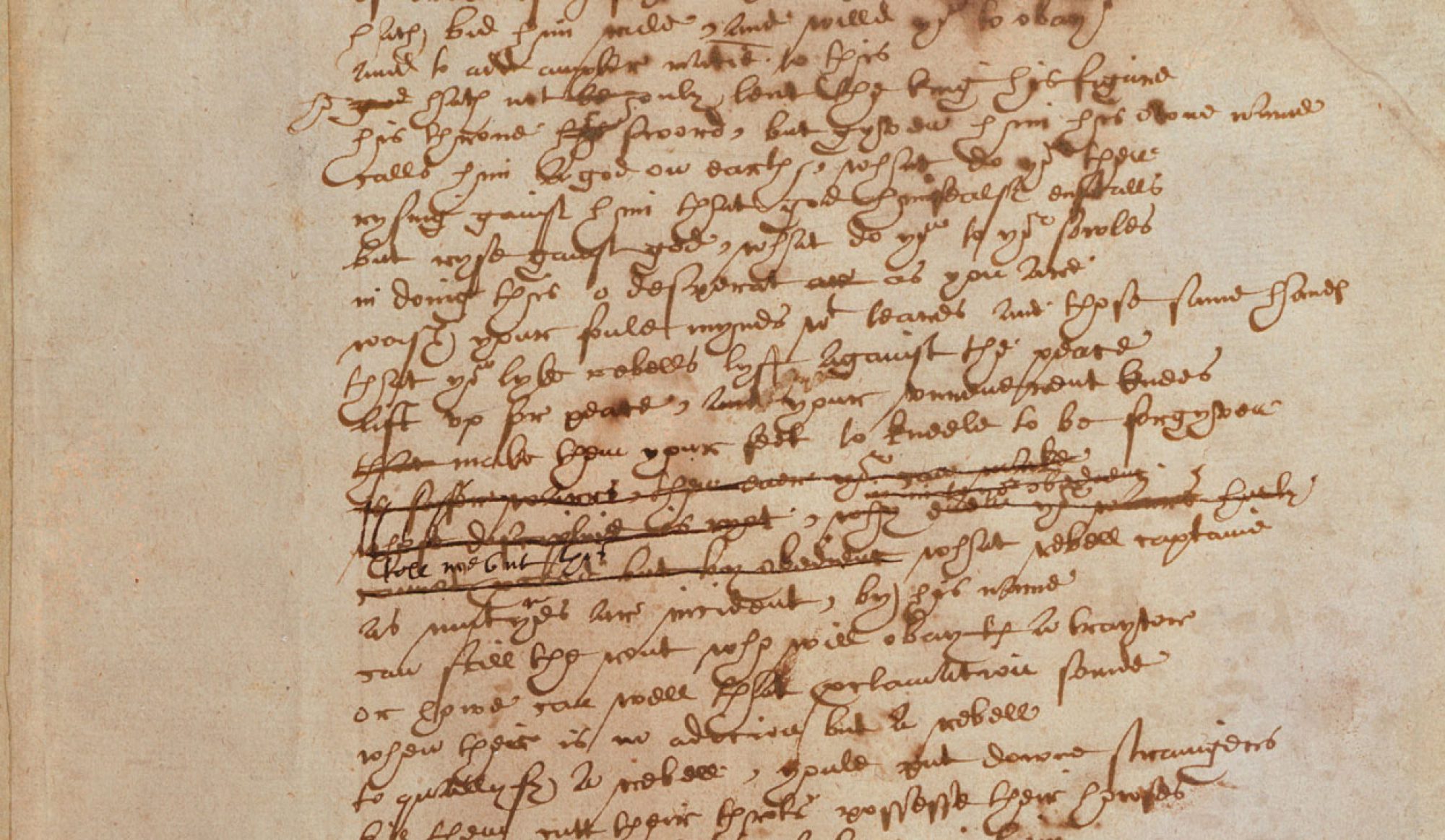[Disclaimer: I’ve just read over my post, and it sounds rather like thinking out loud on (cyber-)paper. It’s probably riddled with conceptual errors, besides. And I notice that Mary and Maddy have posted passages in the meantime, so now I’ll go read those.]
Thanks, Will, for addressing some of this; I was admittedly hoping for another perspective, and it helps to get a sense of your disciplinary background. You make a compelling case for a certain philological orientation (if I needed any convincing; as I suggested, I’m nostalgically mindful of philological shadows everywhere!), and I agree that classical languages provide a limit case, as you say, for thinking about language in/and history. To state the obvious, an ancient text in the original would literally be devoid of sense or meaning for a casual reader. And that’s not quite the case for an older text in English, say: the earlier you go, the more remote the language and the more difficult the task of reading comprehension, but we can imagine a point – different for more or less every reader, and for every period of historical time – at which the linguistic identity of a text and the linguistic identity of an audience fall within close enough range for “easy” – or at least, comfortable (again, whatever that might be for any given reader or epoch) – access. So a measure of historical consciousness – the project of a philological reconstruction – becomes less pressing, itself more remote, if one can understand or relate to a text with thoughts left over for discussion. In its extreme form, this kind of presentism – wherein the activity of reading depends mostly, if not entirely, on the private experience of each respective reader – might be a radical expression of reader-response theory, or a radical application of reception studies.
But of course, at least in the way I read it, this logic rather repeats the mistake of undue emphasis on originary textuality – e.g., at the expense of close attention to a range of [ahem] ludic associations. For lack of a better expression, it’s too diachronic. And of course, synchronicity hasn’t been a better alternative since the ‘60s – because that posits a system or a structure that would accommodate ostensible differences in reading experiences across time (space too). That’s no crumpled handkerchief, in other words.
I want to press some of the words Will used, via last week’s reading/conversation, in part because I feel our (my) vocabulary getting out of hand. A-temporal, poly-temporal, multi-temporal, polychronic – what do all these mean, provided they don’t mean the same thing?! I don’t think we’re really talking about an atemporal mode of reading here, because that would be evacuated of meaning, like Will’s pseudo-Virgil example. And I don’t think polytemporality is exactly on the table either, because that would still be too prone to historicist attack (which would resemble the charge against structuralism, I think – but I might be seriously wrong).
Here’s the relevant portion of the Munro text we read:
“Drawing on Bruno Latour and Michel Serres, Harris suggests that early modern objects might be both polychronic and multi-temporal. An object such as a joint-stool might be polychronic because it gathers associations and meanings as it descends through time, while a printing press might be considered to be multi-temporal because it gathers together substances and technologies developed in various historical periods, complicating linear temporality. As Serres argues, ‘every historical era is likewise multitemporal, simultaneously drawing from the obsolete, the contemporary, and the futuristic. An object, a circumstance, is thus polychronic, multitemporal, and reveals a time that is gathered together, and with multiple pleats’” (20). (Munro goes on to translate this material orientation into linguistic/literary terms.)
Got that? I’m only sold on paper, to be honest. My best paraphrase for polychronicity and multi-temporality would borrow Maddy’s description from class: seeing the crumpled handkerchief whole, and all at once. So, if I were to imagine Virgil on a continuum from the first century BC to the digital age, my polychronic and multi-temporal vision would NOT give precedence to the Aeneid at either endpoint. NOR would I witness the Aeneid changing hands, assembly-line style, or even in network fashion. Instead, out goes the continuum – right? Except I’m still unsure about where I’ve ended up, and what my textual interaction now looks like. Which might be why I took recourse to philology in the first place.
Jessica
P.S. I looked up Altertumswissenschaft, a new term for me, and here’s what Encyclopedia Britannica had: “During the 19th century, Germans evolved the concept of Altertumswissenschaft (‘science of antiquity’) to emphasize the unity of the various disciplines of which the study of the ancient world consists.” This sentence came right after the following definition for classical scholarship: “the study, in all its aspects, of ancient Greece and Rome. In continental Europe the field is known as ‘classical philology,’ but the use, in some circles, of ‘philology’ to denote the study of language and literature—the result of abbreviating the 19th-century ‘comparative philology’—has lent an unfortunate ambiguity to the term.” Now, is it just me, or does it sound like the ambiguity in question relates to classical scholarship here? Ambiguity indeed.
